Chinese Calligraphy in Zuan Shu (Seal Style) 篆 書
Updated: 11/02/2015
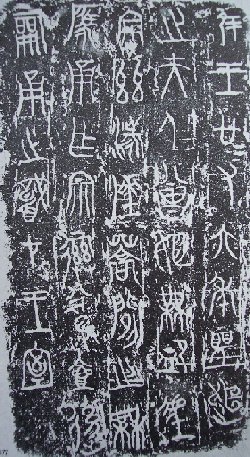
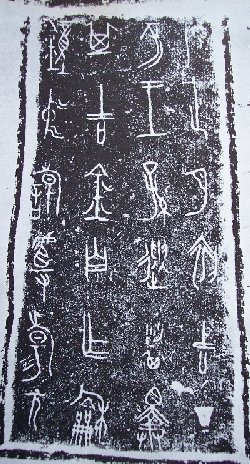
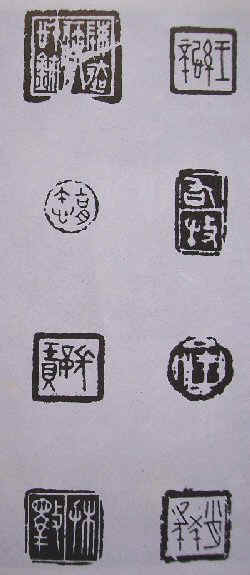
Pre-Chin Period Characters and Seals
The unification of Zuan Shu was in the Chin Dynasty when Lee Si ( 李 斯 ) simplified and standardized the earlier Zuan Shu characters. The structure of each Zuan Shu character looks solid and stable and brings to the viewers an interesting mood and artistic feeling. The Zuan Shu standardized by Lee Si is called Small Seal Style (Shiao Zuan 小 篆), as opposed to Great Seal Style (Da Zuan 大 篆 ). Great Seal Style refers to those Zuan Shu characters existed in the pre-Chin Dynasty period. Da Zuan is also known as “Zo Wen 籀 文.”
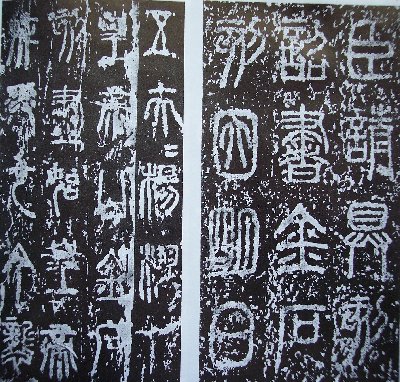
Lan Ye Tai ( 琅 琊 臺 ) & Tai San ( 泰 山 ) Tablets Yi Shan ( 繹 山 ) Tablet by Lee Si
Great Seal Style is not very different from Ancient Script (Gu Wen 古 文 ). It is a synthesis of the variants of Ancient Script. The most famous example of Great Seal Style is Stone Drum Inscriptions (Thu Gu Wen 石 鼓 文 ). It has been the subject of Chinese calligraphy, linguistics, and archaeology for centuries. The famous Tang Dynasty writer, Han Yu, published a long poetic eulogy in praise of these characters. The drums were discovered in the province of Shang Xi. Unfortunately, only two hundred characters remain, and many versions of rubbings of them taken by scholars has left even these in a very worn condition.
Small
Seal Style is also known as “Jade Ligament Seal Style
玉
筋
篆
”
because it resembles ligaments in its twisting and symmetric strokes
without showing expression in each stroke. Each Zuan character also renders a beautiful structural design for everlasting appreciation. However, Zuan
Shu specialists were fewer in number in each dynasty compared with Hsin and Kai
Shu specialists. One of the reasons was that a Zuan Style practitioner must also study
linguistics concerning the origin and evolution of Chinese characters.
Most
calligraphers and linguists agree that Small Seal Style is suitable for beginners.
Because of the frequent irregularities found in Great Seal Style, the
rules in Small Seal Style are easier to follow.
Li Style was very popular in the Han Dynasty. Zuan Style was used in ceremony and important occasions to show respect at that time. Most tablets in Li Shu during the Han Dynasty had titles written in Zuan Shu. Hsing Mon Liang ( 新 莽 量 ), Yuan An Bei ( 袁 安 碑 ) and Yuan Tsun Bei ( 袁 敞 碑 ), and various tablet titles were full of feelings and grandeur; they were all sources of Deng Thu-Ru’s ( 鄧 石 如 ) study.
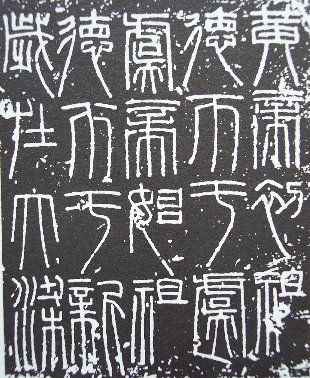
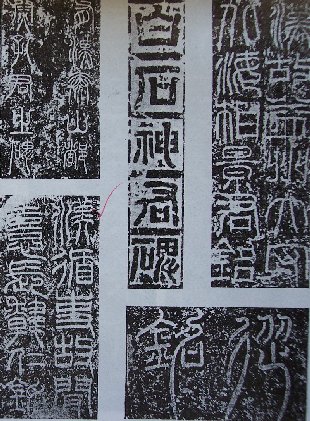
Hsing Mon Liang Various Titles in Zuan Shu for Li Shu Tablets
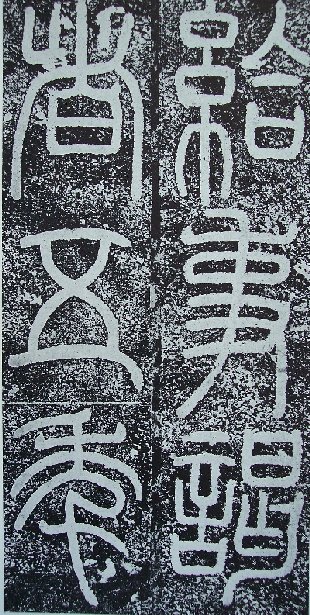
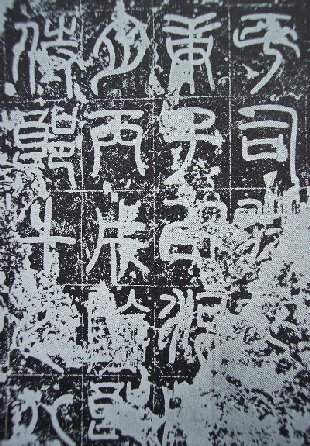
Yuan An Bei
Yuan Tsun Bei
Basic
features of Small Seal Style include:
·
A character has to be tall. The ratio of length of height to width is
about 3 to 2.
·
Symmetric. Left and right sides of a character are usually symmetric.
·
Vertical strokes are straight. Horizontal strokes are flat.
·
Curves and circles are smooth, not rugged.
·
Spacing between strokes is adequately and delicately designed
· Strokes don’t usually vary in thickness and thinness.
With all of those features combined, each character will render a sense of stableness in structure.
Small
Seal Style became the officially approved script following the unification of Chinese
languages in the Chin Dynasty. It is also known as Chin Seal Script
(“Chin Zuan 秦
篆
”).
It contrasts with the previous seal character script called Great Seal Style ( 大
篆
). The Chin Dynasty used Small Seal Style to engrave inscriptions on stones
extolling the merits of persons or things, to engrave seals or marks of
authenticity or emblems or to write imperial edicts. It replaced Great Seal
Style,
marking tremendous historical progress. For a country the size of China, where
dialects are more numerous than in the European countries, a unified written
language plays an important link between various nationalities to cement
national solidarity and achieve national unification. It was the “Chin Zuan”
that served as a link and deserves much credit. And it’s Lee Si (
李
斯
) that exerted a profound influence on the seal character script for
calligraphers and seal makers of later generations.
Small
Seal Style is also known as Jade Ligament Seal Style ( 玉
筋
篆
) for its rigid and emotionless strokes that don’t vary in
thickness or thinness. (The term “Jade Ligament Seal Style” appeared in Su
Yuan-Yu’s book in the Tang Dynasty while he was referring to Lee Yang-Bing’s
work.) The strokes resemble jade chopsticks or lead threads and the style is
kind of boring and strict in making curves, turning and circles. Later people
view the Small Seal Style of Lee Yang-Bing’s (
李
陽
冰
) as an ideal type. To sum up, the Jade Ligament Seal Style was not
affected by Han Zuan. It traces back directly to Chin Zuan and it is a more condensed
form. People usually refer to Lee Si and Lee Yang-Bing as "the Two
Lees" in Chinese calligraphy history.
“San Te Thu Jing 三 體 石 經 ” of the Three Kingdoms Period inherited Zuan Shu of the Han Dynasty. It was neatly arranged and characteristic for the “hanging needles 懸 針” feature. However, this tablet was erected by the government and the calligraphy looked very solemn. Then during the South and North Dynasties era, there were many derivatives for Zuan Shu writing. And it was until Lee Yang-Bing ( 李 陽 冰 ) of the Tang Dynasty that resurrected Zuan Shu. Lee was a contemporary of Yen Jen-Ching. He was a proficient linguist and he reedited “Suo Wen Je Zu 說 文 解 字 ” (a book that exemplifies revolution of Chinese characters.) He was very satisfied with his work and said he was the successor of Lee Si.
San Te Thu Jin “San
Fen Gee 三
墳
記”
by Lee Yang-Bing
Later in the Ching Dynasty, Deng Thu-Ru (1743-1805) devoted his lifetime effort to study Small Seal Style of Chin. He was the most outstanding Zuan Shu specialist in the Ching Dynasty. He resurrected Small Seal Style and instilled into it vital force and represented it in a grand manner. Thus, it’s widely recognized to start learning Zuan from Deng Thu-Ru’s work and then trace to his followers such as Wu Run-Chih ( 吳 讓 之 ) and / or Zhao Chih-Chian ( 趙 之 謙 ).
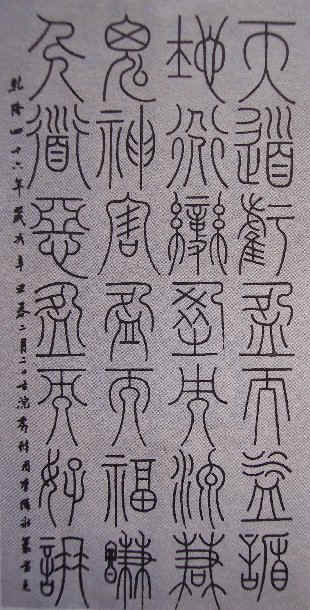
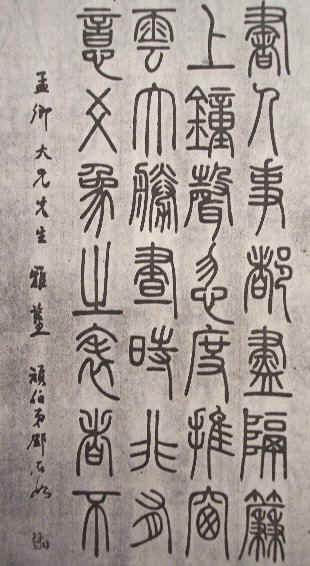
Deng
Thu-Ru's Works
In the Ching Dynasty, Bao Shu-Cheng ( 包 世 臣 ) published a famous calligraphy book “Yi Zo Thuan Ji 藝 舟 雙 輯.” His deep admiration for Deng Thu-Ru and his method gave a revelation to Wu Run-Chih and Zhao Chih-Chian. In this book, Bao emphasized the importance of holding a brush as adopted by his teacher Deng Shu-Ru. Bao's theory had a great influence on Ching Dynasty's emphasis on Li and Zuan Styles and calligraphy works on monuments.
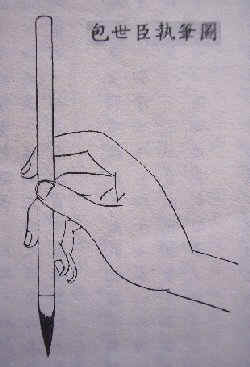
Bao Shu-Cheng's Method of Holding A Brush
A
lot of calligraphy teachers prefer students to start from Wu Run-Chih's Zuan
Shu. Then the students may continue learning Deng Thu-Ru's and Zhao Chih-Chian's
Zuan Shu. Wu had more condensed
strokes while Deng had more expressive strokes while Zhao had inherited the Kai
Shu of Wei Bei into his Zuan Shu strokes. However, none of them followed the traditional rules
strictly set by the Zuan Shu of the Chin Dynasty. Those three Zuan Shu specialists were close in styles and
system. After we are familiar with practicing their work, we may move up to Li
Si and Li Yang-Bing or directly start learning Stone Drum Inscriptions, Jin
Wen and then finally Gia
Gu Wen.
It
is quite common that we can refine our Li Shu by practicing more Zuan Shu, or
vise versa. They share some mutual aspects in theory.
As
we are getting more familiar with Zuan Shu, we also need to study linguistics.
It’s a tedious job. However, we may understand the origin and changes of each
character better from this study and it will reward us abundantly later. It can
also help us to prevent making mistakes in writing.
There have been laymen trying to coin Zuan Style characters themselves. They make up their own ways of writing without reliable sources and principles. For example, it’s quite popular to write “100 tigers”, “100 longevity”, or “100 good luck” in a single work just to show that they have collected 100 different ways to write a single character and cater the public. However, a sincere calligrapher should check the legitimacy and avoid flattering the audience.
The
change from Zuan Shu to Li Shu and then to Kai Shu has a long history. Later, in dynasties
when Kai and Li were popular, people still used Zuan Shu for titles of tablets to
show respect. And it’s also a good way to learn Zuan Shu by emulating a
tablet’s title in Zuan Style.
A
scholar of the Sung Dynasty wrote that Hsu Shian (
徐
鉉
) was good at Small Seal Style. When his work was taken under sunshine for a
closer look, they found tiny but darker lines inside each stroke. This is
exactly the Center Tip Theory
“Zong Fong 中
鋒
理
論
”
(literally, brush pen tip at the middle of hairs) that is the core of all
Chinese calligraphy theories. It was mentioned by every prominent calligrapher.
When Yen Jen-Ching
stated how his teacher Zhang Shui
passed to him the secrets of using a brush, he pointed out that the calligraphy
should look like drawing on sand with awl (“Zuei Hwa Sa
錐
劃
沙.”)
The principle requires keeping our brush and brush hair as straight and
vertical as possible. It’s different from painting or the Western way to
hold a pen. According to this principle, we should never ever bend the brush and
the hair. We may rotate the brush when necessary with fingertips (knuckles not
recommended). Bending a brush outward or toward oneself is a very common defect
and is seen among laymen. By strictly obeying this principle, the sharpness
or tip of hairs are hiding inside during brush motions rather than going
scattered and collapsed. Hsu Shian’s method was also a supportive evidence
that most Zuan Shu specialists were inheriting Lee Yang-Bing’s method.
The two pictures below show the sequence of strokes and the direction of brush tip at beginning and ending of each stroke. When going down, for example, we don’t go down directly at first. In stead, we move our brush tip upward for a little bit and then downward. This “opposite direction movement” is called “hiding the sharpness of hairs” (“Tsun Fong 藏 鋒.”) It is the most basic principle in writing a Zuan or Li character. Without knowing this, we won’t be able to produce enough strength and stableness in each stroke.
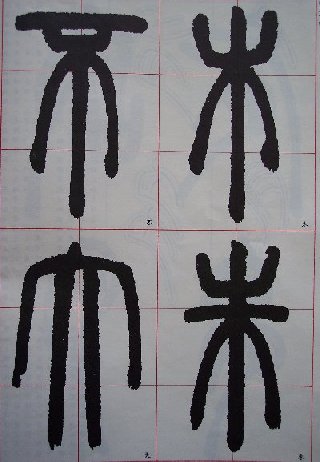
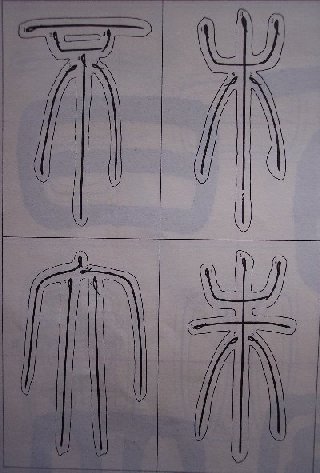
Lee Si (?-208 BC) 李 斯
After Chin Shu Huan ( 秦 始 皇 ) demolished the Six Nations and united the ancient China in 221 BC, he asked the Prime Minister Lee Si ( 李 斯 ) to unify characters based on previous styles. The official standardized characters are called “Zuan Shu”, or known as “Small Seal Style (Shiao Zuan)." Lee Si was the founder of "Shiao Zuan."

Lan Ye Tai ( 琅 琊 臺 ) & Tai San ( 泰 山 ) Tablets Yi Shan ( 繹 山 ) Tablet
Lee Yang-Bing (?-?) 李 陽 冰
He specialized in a very skinny Zuan Style. He considered his Zuan Shu only after the Prime Minister Lee Si ( 李 斯 ) of the Chin Dynasty.
Hsu
Shian (917-992)
徐
鉉
An
expert in ancient characters. He and his brother, Hsu Kai, were working together
to correct and add comments to “Suo
Wen Je Zu 說
文
解
字”
written by Hsu Seng ( 許
慎
) in the Tang Dynasty.
Deng
Thu-Ru (1743-1805)
鄧
石
如
Other
names: Deng Won-Bai, Deng Won-Bo
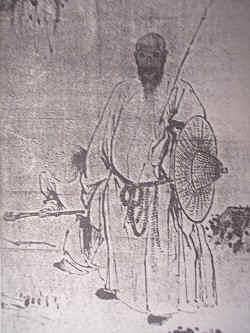
His
family was poor when he was young and he could not attend school. He learned
calligraphy and seal making from his father and literature from older men in
town. When he was after twenty years old, he earned his living by making seals.
He traveled widely to make friends with scholars.
When
he was twenty-seven, a chief lecturer of an academy who appreciated his
intellect referred him to Mae Mio. He was a big collector of ancient calligraphy
works since the Chin and Han Dynasties. While staying at Mae Mio’s house for
eight years, Deng Thu-Ru treasured every moment of his time to practice
emulating ancient calligraphy pieces. He learned up to Stone Drum Inscriptions “Thu Gu Wen” and Lee Yang-Bin’s work, and down to all Li Shu in the Han
Dynasty.
Then
he began to travel again when Mae Mio was not rich any more. We he was
forty-eight, he visited Beijing but was not satisfied there. He traveled again
and received recognition from other scholars.
Because
of his poverty and lack of instruction, his works around age thirty was not
highly regarded.
His works around forty were almost Jade Ligament Seal Style. In his later life, he was regarded as the greatest Zuan Shu specialist after Lee Si and Lee Yang-Bing.
Wu
Run-Chih (1799-1870)
吳
讓
之
He
learned from Bao Shu-Cheng ( 包
世
臣
) and Deng Thu-Ru. He was highly regarded for
calligraphy, painting, and seal making. He was also considered to be mature at a
younger age than Deng Thu-Ru. The condensed beauty of his strokes was different
from Deng Thu-Ru’s lively and interesting strokes.
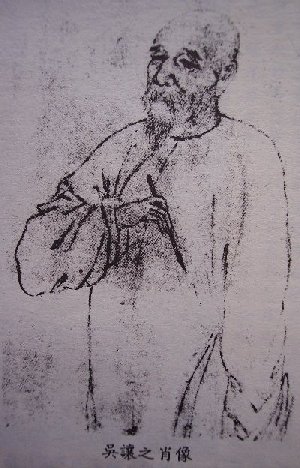
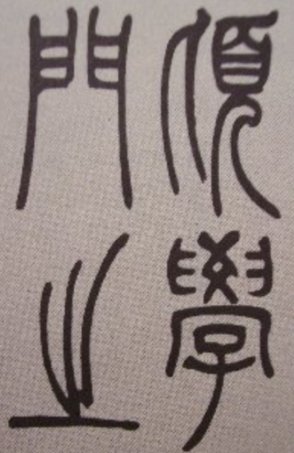
Yang
Yi-Son (1813-1881)
楊
沂
孫
A highly esteemed Zuan Shu specialist.
Zhao
Chih-Chian (1829-1884)
趙
之
謙
He learned Yen Jen-Ching’s calligraphy at first. Then he also learned Huei Nan-Tien’s painting. He failed exams at the capital Beijing five times. Later he decided not to be confined by Yen Jen-Ching’s Kai Shu rules for government exams. He began to focus on Wei Bei as promoted by Bao Shu-Cheng. He studied various works of Zuan Shu in the Chin and Han Dynasties and created his unique style. Yet his work was criticized as lacking masculine power.

Wu
Da-Cheng (1835-1902)
吳
大
澂
A highly regarded linguist and collector of Jin Wen.
Sun Shim-Yen 孫 星 衍
Wu
Tsun-Shuo (1844-1927)
吳
昌
碩
Famous for his emulation of Stone Drum Inscriptions and seal making.
PLEASE CHECK BACK LATER FOR MORE VIDEOS.
The features of Great Seal Style (including the Stone Drum Inscriptions & Jin Wen) contain more irregularities. The following chart shows the “standardized” Small Seal Style characters and their predecessors in Great Seal Style from which they were possibly derived. The predecessors were a lot more irregular than the standardized Small Seal Style.
| Small Seal Style | Predecessor 1 | Predecessor 2 | Predecessor 3 |
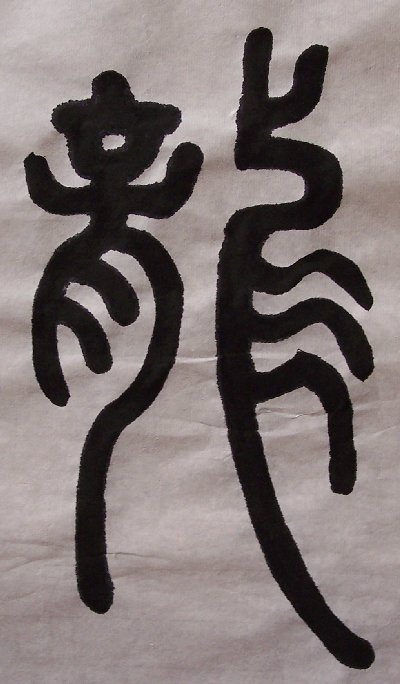
Dragon |
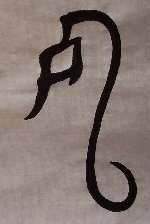 |
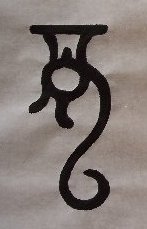 |
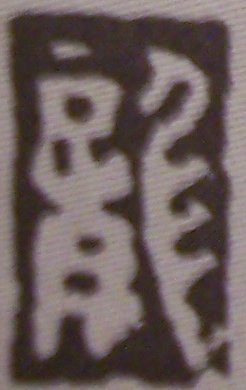 |
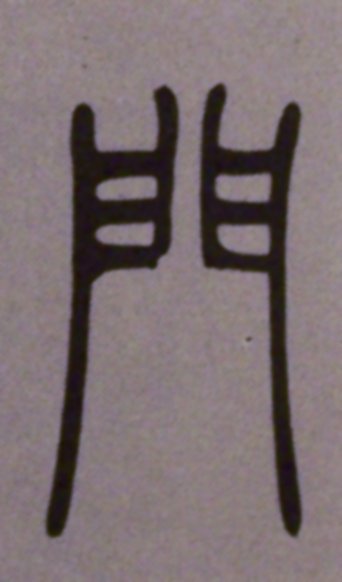
Door |
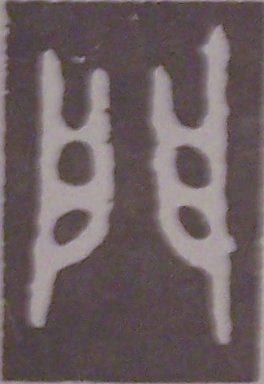 |
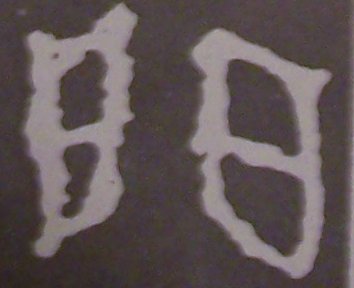 |
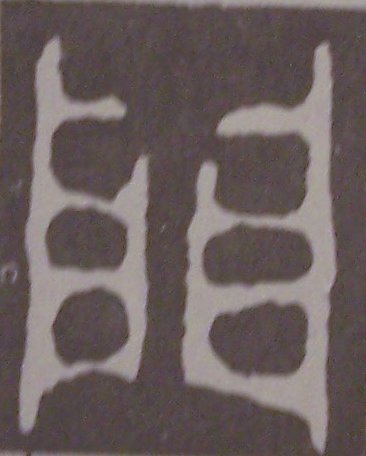 |
|
Connect |
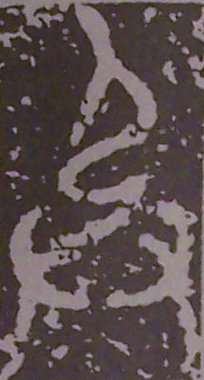 |
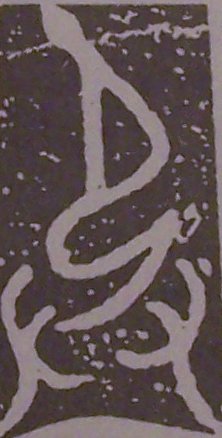 |
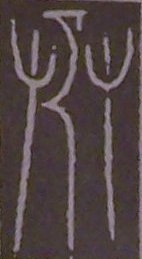 |
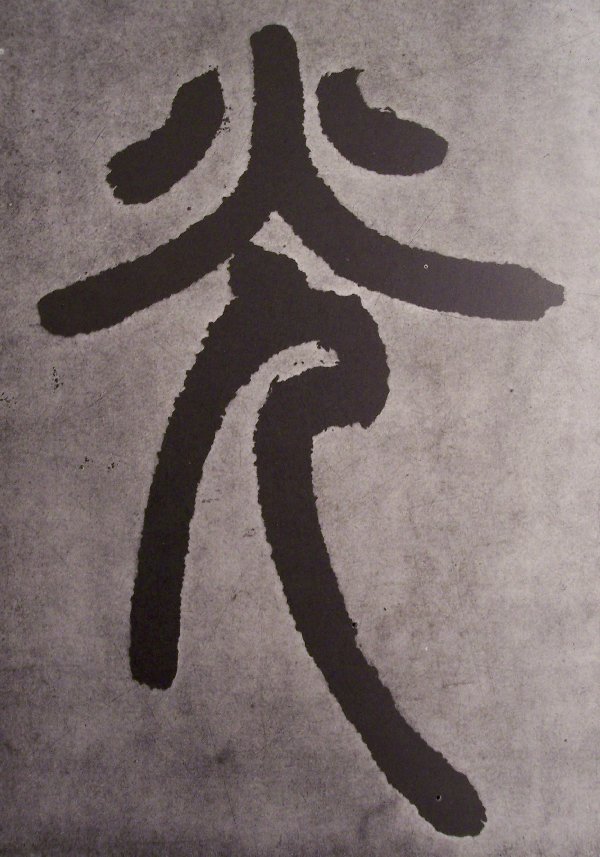
Light |
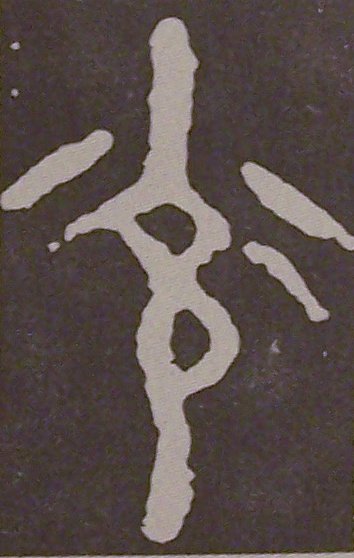 |
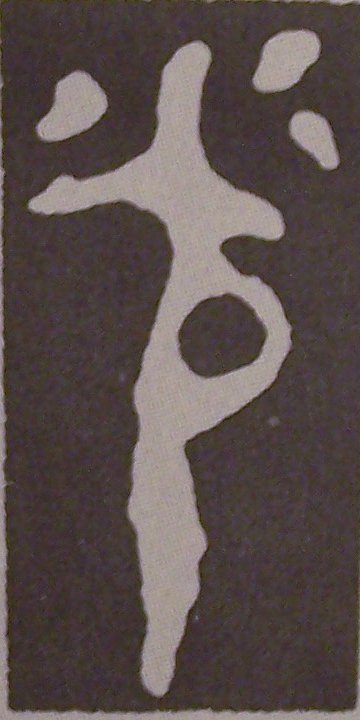 |
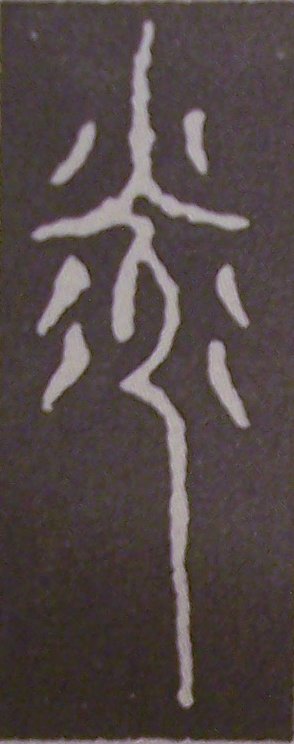 |
The readers now should have a brief idea about different writings of ancient Chinese characters. Due to the geography and population sizes of China, such differences in ancient China were inevitable. However, the similarities are mostly the artistic design and spiritual beauty that the ancient Chinese people adored in their daily life – even in just writing characters.
Most
calligraphers agree that beginners of Small Seal Style start from the three
calligraphers in the Ching Dynasty: Deng Thu-Ru, Wu Run-Chih, or Zhao Chih-Chian. Each of them has
unique structure, brushstroke, and style that are suitable for beginners. However, their levels
may not be the ultimate goals of serious learners. We may
learn more deeply by diving into the works of Chin and Han Dynasties and even
Gia Gu Wen and Jin Wen in the Shang & Zhou Dynasties. Once we are familiar
with the brush motions and strokes for Chin Zuan or other Small Seal Styles, the way to
understand Jin Wen, Gia Gu Wen, Thu Gu Wen will be clearer. The basic principles
of brushwork will be the same. Only the character structures differ. Good copies of masterpiece of Chin Zuan, Jin Wen, or Shu Gu Wen are
always our best lifetime teachers. Those masterpieces were the ultimate
achievement of the ancient wise men. Their condensed and unsurpassed beauty will
always guide us for lifetime and generations.
After
being familiar with Small Seal Style, we may proceed to Jin Wen or Gia Gu Wen.
甲骨文釋文用字頻率檢索
甲骨文楷原對應檢索
甲骨文構件構字頻率檢索
Stroke Sequence of Zhuan Shu "Three Masters of the Qing dynasty" ( 吳讓之 ): http://mp.weixin.qq.com/s?__biz=MjM5NTAxNzc2NA%3D%3D&mid=400328715&idx=1&sn=33b6626da9a4262b4bc9b7701ddaaab2&scene=0#wechat_redirect
More To Be Added.
Center Tip Theory 中 鋒 理 論 – Holding a brush vertically but not bent; never let hairs collapse.
Chin Zuan 秦 篆 – Standardized and simplified Zuan Shu in the Chin Dynasty derived from Great Seal Style.
Great
Seal Style (Da Zuan) 大
篆
–
Characters in pre-Chin periods.
Han
Zuan 漢
篆
–
Zuan Shu in the Han Dynasty.
Jade
Ligament Seal Style 玉
筋
篆
–
Nickname for Small Seal Style.
Jin
Wen
金
文
–
Inscription on bells or bronze tripods in the Shang and Zhou Dynasties.
Gia
Gu Wen (Oracle Bone Inscription 甲
骨 文)
– Characters inscribed on the turtle shells and animal bones of over 3000
years ago. They are the earliest systematic Chinese written language extant
today. Most of them are divinatory in content and were found at the Shang
capital city of Yin (Shiao-Tun Village, An-Yang County, Honan Province).
Lee
Si 李
斯 – Prime minister who standardized
Small Seal Style in the Chin Dynasty.
Lee
Yang-Bing 李
陽
冰
–
Small Seal Style specialist in the Tang Dynasty.
Reverse In Flat Out – A brush technique generally required for writing Seal Style strokes.
Small
Seal Style (Shiao Zuan) 小
篆
–
As opposed to Great Seal Style; the Zuan Shu simplified from Great Seal Style.
Thu
Gu Wen (Stone Drum Inscriptions 石
鼓
文
)
– The earliest Chinese characters inscribed on ten stones.